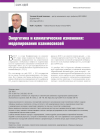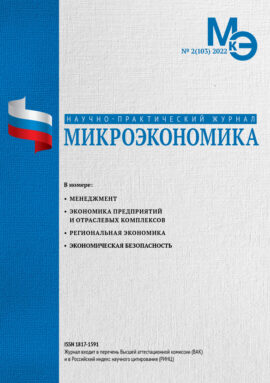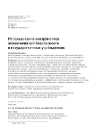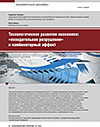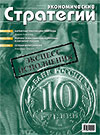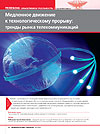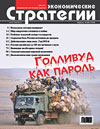DOI: https://doi.org/10.33917/es-5.185.2022.138-145
Assessing feasibility and possible consequences of integrated energy consumption regulation requires the creation of hybrid model complexes that combine climate modeling, energy modelling and economic modeling as well as investment in the development of certain technologies and areas. These model complexes allow to build various long-term development scenarios for the world and individual regions and countries, to assess the impact of introduced policies and regulation methods on all stakeholders and on the economy and public welfare in general. The paper describes the basic approaches to modeling and also considers in detail the European set of models and the main results that it provides at the output. Taking into account this foreign experience in developing assessments of the economic consequences of climate change and decarbonization, according to the author, will be useful for Russia.
References:
1. Parizhskoe soglashenie [Paris Agreement]. Organizatsiya Ob”edinennykh Natsii, available at: https://www.un.org/ru/climatechange/paris-agreement.
2. Energoperekhod i riski dlya Rossii [Energy Transition and Risks for Russia]. Neftegazovaya vertikal’, 2021, 13 marta, available at: http://www.ngv.ru/magazines/article/energoperekhod-i-riski-dlya-rossii/
3. Boiko A.N. Gosudarstvennaya korporatsiya “Rosatom”: unikal’naya forma vnutrisistemnogo upravleniya i khozyaistvovaniya [“Rosatom” State Corporation: a Unique Form of Intra-System Control and Management]. Menedzhment i biznes-administrirovanie, 2020, no 4, pp. 25–36.
4. Kpasyukova N.L. Otsenka innovatsionnoi sostavlyayushchei chelovecheskogo kapitala Nizhegorodskoi oblasti [Evaluating the Innovation Component of the Human Capital of the Nizhny Novgorod Region]. Samoupravlenie, 2021, no 4(126), pp. 420–427.
5. Britz W., Ittersum М., van, Lansink A.O., Heckelei T. Tools for integrated assessment in agriculture. State of the art and challenges. Bio-based and Applied Economics, 2012, N 1(2), pp. 125–150, available at: DOI: https://doi.org/10.13128/BAE-11232.
6. Jansson T., Britz W. Sequential calibration of economic simulation models, the cases of CAPRI and a CAPRI-GTAP link. Paper presented at the Annual Conference on Global Economic Analysis, Bangkok, Thailand, June 9–11, 2010, available at: https://www.gtap.agecon.purdue.edu/resources/download/4991.pdf.
7. Jacoby H.D., Sch fer A. Experiments with a hybrid CGE-MARKAL model. Energy Journal, 2006, N 27, pp. 171–178.
8. Lanz B., Rausch S. General equilibrium, electricity generation technologies and the cost of carbon abatement: A structural sensitivity analysis. Energy Economics, 2011, N 33, pp. 1035–1047.
9. Weitzel M., Vandyck T., Keramidas K., et a1. Model-based assessments for long-term climate strategies. Nat. Clim. Chang., 2019, N 9, pp. 345-347, available at: DOI: https://doi.org/10.1038/s41558-0l9-0453-5.
10. Wene CO. Energy-economy analysis: linking the macroeconomic and systems engineering approaches. Energy, 1996, N 21(9), p. 809e24.





